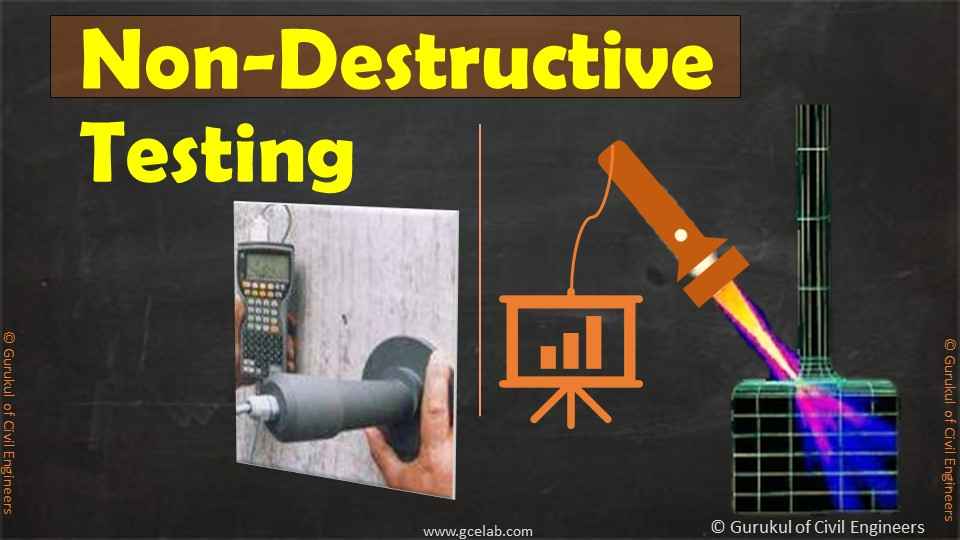What is Non-destructive Testing? 10 important points
- By
- Pooja |
- August 20, 2021 |
- Civil Engineering, Bridge Engineering, Building/ Structure Engineering,

Table of Contents
What is Non-destructive Testing?
What is the application of Non-destructive Testing (NDT)?
What are the testing methods of Non-destructive Testing (NDT)?
Which Non-destructive Testing (NDT) method is best?
Comparison between destructive and non-destructive testing?
Difference between non-destructive evaluation and non-destructive testing
Which is the least expansive method of non-destructive testing?
What are the advantages and disadvantages of non-destructive testing?
Security issues can be detected
The disadvantage of Non Destructive testing
Is non-destructive testing is good career option?
What is Non-destructive Testing?
Non-invasive testing (NDT) is a process of testing, evaluating, or testing equipment, components, or conferences of suspensions, or symptom differences without compromising the performance of a component or program. In simple terms, when the tests or test is completed the object can still be used.
In contrast to NDT, some tests are unsurprisingly harmful and therefore performed in a limited iteration, not on the materials, objects, or assemblies used in real-time. These destructive tests are regularly used to detect body structures such as ductility, yield, impact resistance, high strength, durability, and fatigue, but the detoxification and variability of the physical symptoms are most effective in NDT.
Today modern injury tests are used for production, design, and internal service testing to ensure product integrity and reliability, to control production processes, low production costs, and to maintain the same quality standard.
During construction, NDT is used to ensure the quality of equipment and joining processes during the manufacturing and construction phases, and internal NDT inspections are used to ensure that the products used to continue to have the integrity required to ensure their use and public safety.
What is the application of Non-destructive Testing (NDT)?
Strategies include visual inspection, liquid penetration testing, magnetic particle testing, current eddy testing, ultrasonic testing, and radiography. The application of these NDT methods to input production (AM) and their suitability for error detection in the more developed components are reviewed.
Read More:
What is Structural Health Monitoring? 9 Important Points
What is the Function of Bridge Foundation or Pier and its Types? 5 Important Points
What are the testing methods of Non-destructive Testing (NDT)?
The terms of the test usually refer to the type of input or instrument used to perform that test.
Current NDT methods are- Acoustic Emission Testing (AE), Laser (LM) Testing, Leak Testing (LT), Liquid Penetrant Testing (PT) ), Neutron Radiographic Testing (NR), Radiographic Testing (RT), Thermal / Infrared Testing (IR), Ultrasonic Testing (UT), Vibration Analysis (VA) and Visual Testing (VT), Electromagnetic Testing (ET), Magnetic Flux Leakage (MFL), Magnetic Particle Testing’s (MT).
The six most widely used test methods are MT, PT, RT, UT, ET, and VT. Each of these test methods will be described here, followed by other, less commonly used test methods
Which Non-destructive Testing (NDT) method is best?
Visual Testing (VT) Method: Visual testing method is a basic way to test an object or thing without altering it in any way. Visual inspection can be done visually, by inspectors who visually review a particular item or property.
Comparison between destructive and non-destructive testing?
When you compare the most destructive and most destructive tests, in some ways testing is the most reliable method. However, non-hazardous testing (NDT) saves more profit than non-corrosive testing because it covers more land and saves on material costs. With NDT, analysts can avoid damaging assets and find more flaws in the process.
Damage testing is ultimately very expensive and wasteful, as inspectors must damage materials that could be used during normal operation. In addition, destructive methods testing is also less effective than NDT in terms of testing times, including longer manual procedures that require more effort than the deferred procedures that can be provided by NDT.
Difference between non-destructive evaluation and non-destructive testing
While NDT is restricted to testing, NDE includes both testing and outcome testing. That is, NDT is used to detect material defects while NDE is used to detect errors while also measuring the size, shape, posture, and other physical features of the problem.
Which is the least expansive method of non-destructive testing?
Visual testing: Visual testing is a simple and inexpensive non-destructive test, and all welds should be subjected to this basic method, using a meat eye or magnifying glass to ensure imperfections.
Read More:
How to learn STAAD Pro? 7 Important Points
How to become a Structure Engineer? 8 Important Points
What are the advantages and disadvantages of non-destructive testing?
Non-destructive testing has been around longer than most people think. The first accurate method of non-destructive testing was established in the early nineteenth century when X-Rays were conceived by German scientist Wilhelm Conrad Rontgen. After all, the old test method does not damage visual testing, the method of testing only a fraction of the above errors by sight only.
This is still a common practice, and it works very well today, by skilled professionals who know precisely what needs to be examined. Many people overlook that this is a non-destructive test method, and therefore this method of testing means testing without harming the object. There are four key advantages of non-destructive testing:
Security issues can be detected
Non-corrosive testing is used to determine whether an item needs repair or not, and whether or not it is safe to use. Tests are performed to ensure the safety of the product, as well as to ensure that the person performing the work on any machine or device is also safe.
Most diagnostic tests are not harmful to persons, although tests relating to radiographic should be performed under strict conditions. All tests should ensure that the products remain undamaged. Work-based non-corrosive tests have the potential to save lives. Especially when done in industries that rely on flexible materials or that have high pressures and equipment.
When performed properly, and the results of tests are used correctly to identify and it solve potentially dangerous problems in a simplistic way.
It provides trust
Any used object or equipment may undergo a series of potentially harmful tests that will eliminate the risk of inaccuracy, or oversight.
It costs well economical
Different types of sectors operate at different levels of security and require compliance with different laws and regulations. Equipment will need to be inspected at various times, for this reason. Non-destructive testing will remain the least expensive method in terms of mechanical testing and maintenance.
These types of tests can also provide insight that can lead to the successful repair or replacement of various components or parts before real or functional malfunctions occur, which will save you a lot of money in the future.
It provides guarantee
Verification is so simple, but sometimes it can be a very important benefit in a non-destructive test. If a factory knows that their equipment is A1 and works properly, it can provide stability and assurance.
The disadvantage of Non Destructive testing
Parts that need to be cleaned before and after testing The sensitivity of the test can sometimes be affected when something is finished. Sometimes there may be a lack of depth In some non-destructive testing methods, only non-aggressive structures can be tested Some testing methods require electricity
Is non-destructive testing is good career option?
NDT is used in a wide variety of industries such as; Oil & Gas, Energy, Aerospace, Nuclear, Transport, etc and job opportunities are very high. Work in the NDT has great potential, if adequate, training is attended.
I hope the above blog provides you with an in-depth knowledge of non-destructive testing and associated features.
Please feel free to like, share and comment.
Read More:
- What is Finite Element Analysis | Finite Element Modeling? 9 Important Points
-
What is Earthquake Resistant Building | Structure? 8 Important Points
Admin, gcelab.com Please see our Pillar Post to know why we founded gcelab.com.

Pooja
Founder at gcelab.com, Pooja is an Entrepreneur unlocking human potential. Working in the Principles of Lean Start-up, Pooja believes in Transparency and User Happiness the most. Pooja’s background in teaching gives her a sophisticated grasp on even the most tedious aspect of course building. She is passionate about people who believe that good is not enough.



